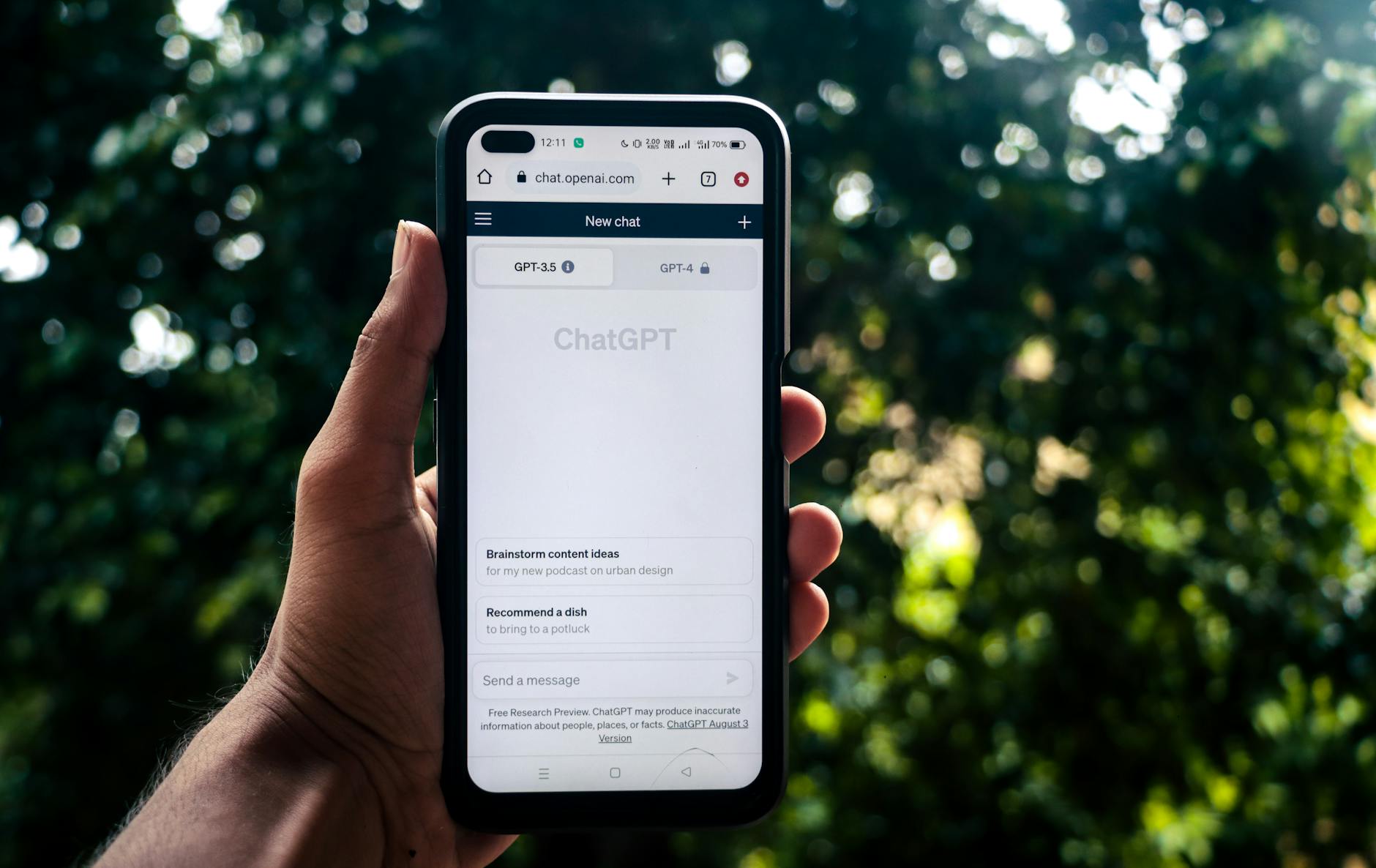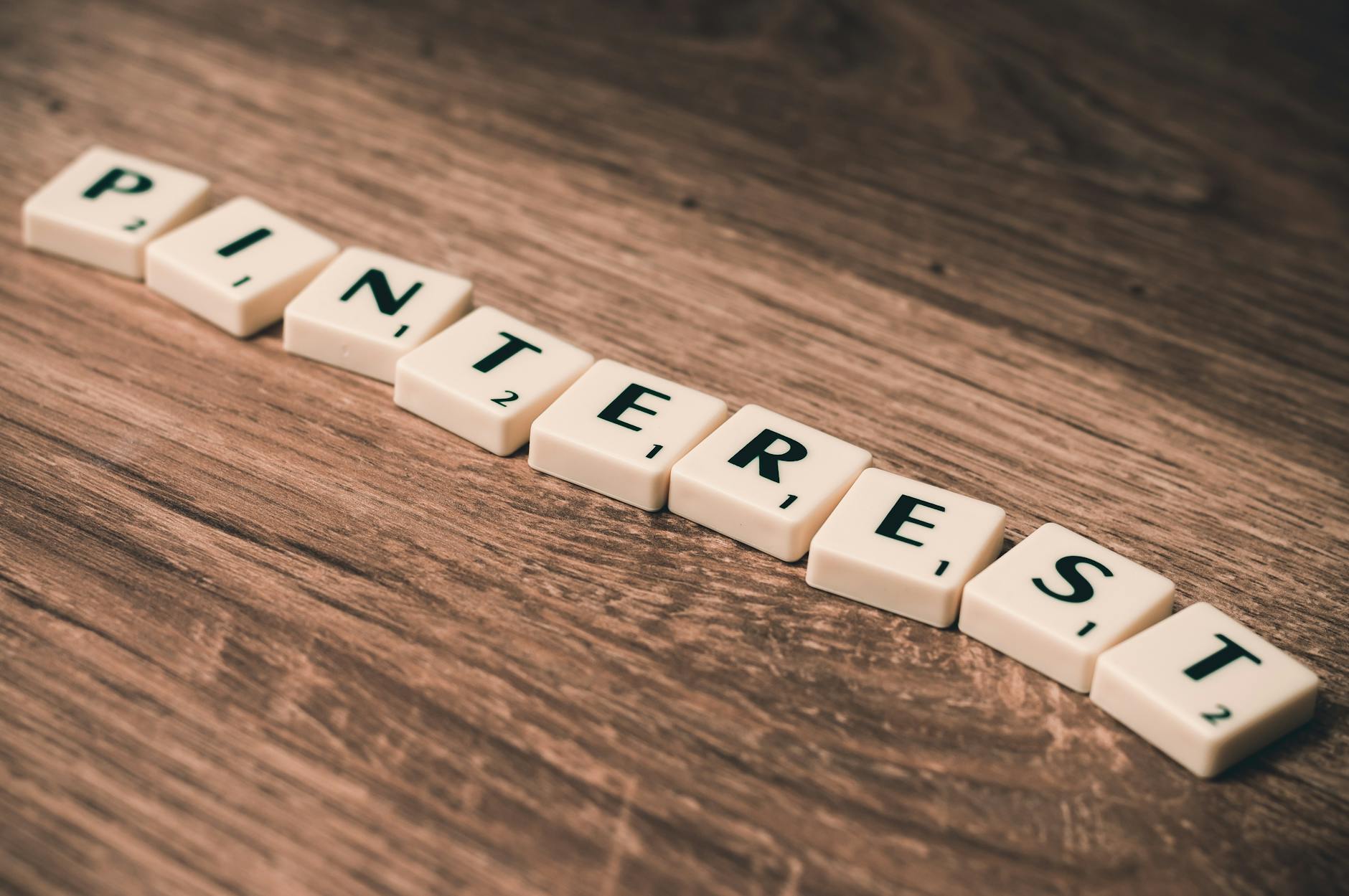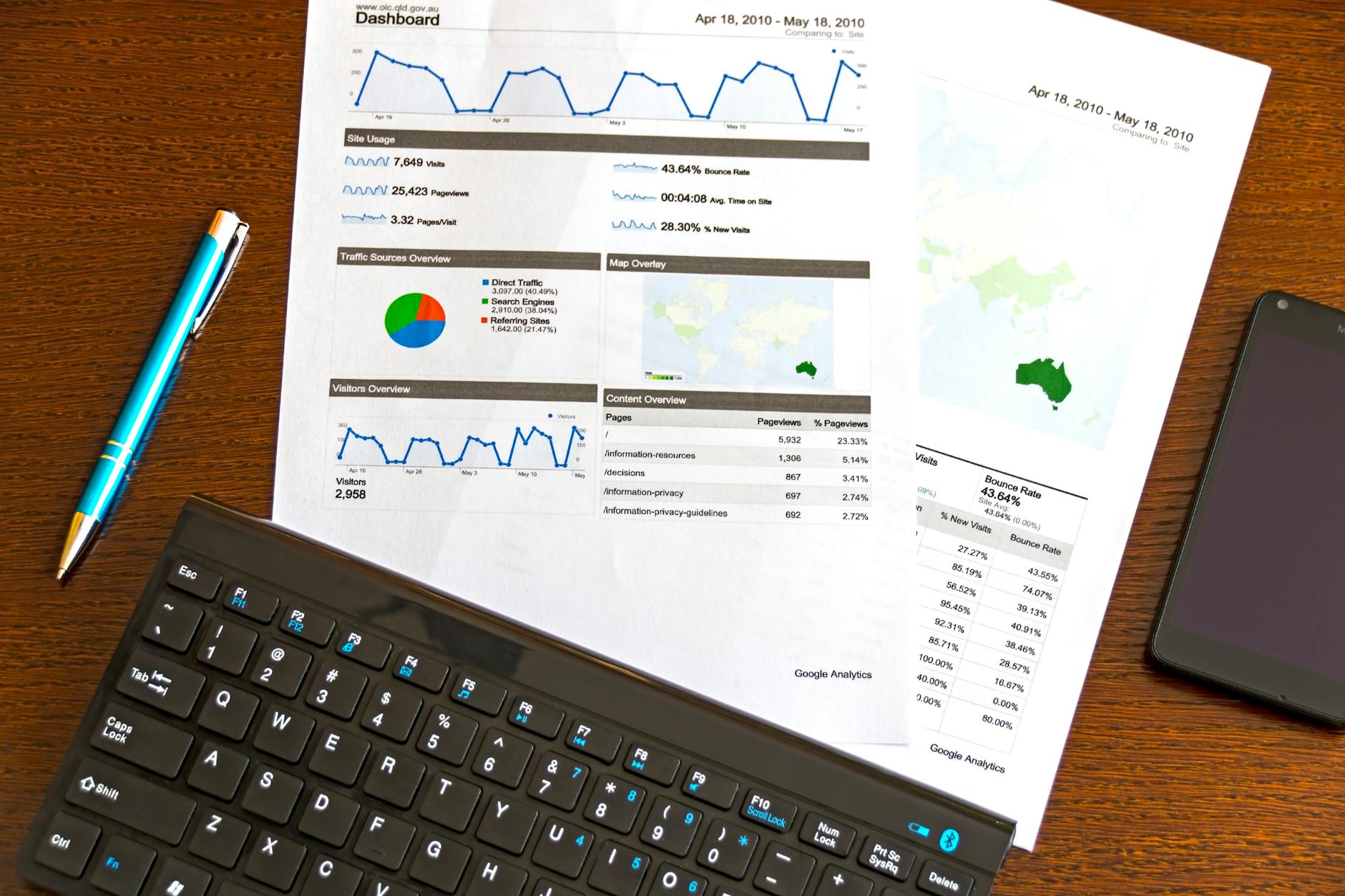Pinterest Marketing: Why Ignoring This Platform Can Cost You
Pinterest Marketing: Why Ignoring This Platform Can Cost You
Pinterest isn’t just another social platform; it’s a hybrid of social media and a search engine. With its visual appeal and user-driven content, it’s becoming a critical player in online marketing.
In today's fast-paced environment, businesses need every edge they can get. Ignoring Pinterest could mean missing out on a vast audience eager to discover and engage with your brand. This platform drives significant traffic, with users actively searching for inspiration on products and ideas.
In this post, you’ll find actionable insights on why Pinterest should be part of your marketing strategy. We’ll cover how to create engaging content, optimize your pins for search, and tap into the platform’s growing trends. Ready to boost your visibility and connect with new customers? Let’s dive in.
For more on using Pinterest effectively for marketing, check out this YouTube video. You can also explore Pinterest’s 2024 trend predictions to stay ahead of the curve.
Understanding Pinterest as a Marketing Platform
Pinterest is more than a space for pretty pictures. It’s a unique blend of social media and search functionality, offering brands an opportunity to engage with potential customers in various ways. Understanding its dual nature can help you harness its full potential for marketing.
Pinterest's Dual Nature: Social Media and Search Engine
Users interact with Pinterest as both a social platform and a search engine, creating a dynamic environment for marketers. On one hand, people use it to collect and share ideas, following other users and boards. This social aspect encourages community engagement.
On the other hand, Pinterest functions much like a search engine. Users actively search for inspiration and information, making it a treasure trove of purchase intent. As they search for topics like “wedding planning” or “home décor,” they’re gathering ideas and inspiration, often leading to potential purchases.
This dual functionality means that businesses need to strategize content that caters to both browsing and searching behaviors. By creating visually appealing pins that provide clear solutions or inspiring ideas, brands can catch users' attention and drive them toward conversions.
For strategies on mastering Pinterest marketing, check out this ultimate guide to Pinterest marketing.
User Demographics and Behavior on Pinterest
Understanding who uses Pinterest and how they interact with content is key to tailoring your marketing efforts. Here are some vital statistics for 2024:
- Pinterest reaches 40% of US households with incomes over $150,000, making it a platform frequented by higher-income individuals (source).
- A striking 76.2% of users are women, while men make up just 17.2% of the user base (source).
- The largest age group on Pinterest is 18-34, comprising 58% of the user population, indicating a younger audience is engaged on the platform (source).
These demographics highlight the importance of focusing on visuals, lifestyle content, and targeted messaging that resonates with your audience. If your products align well with this user base, Pinterest may be the perfect avenue for driving engagement and sales.
Make sure you're informed about user trends; check the 2024 statistics here.

Photo by Sanket Mishra
The Impact of Pinterest on SEO
Pinterest has become an influential tool for digital marketing and SEO. It's not just a platform for sharing pictures; it has the power to boost your website's visibility and drive organic traffic. So, how does Pinterest enhance your SEO efforts? Here are two key areas to consider.
Using Pinterest for Backlinks
One of the significant ways Pinterest can impact your SEO is through backlinks. While Pinterest links are typically "nofollow," meaning they don't pass link equity, they can still generate valuable referral traffic to your site. Here’s why you should pay attention:
- Traffic Generation: Each Pin leads users back to your site, creating pathways for new visitors. A well-optimized pin can act as a beacon, attracting viewers who might convert into customers.
- Increased Visibility: As your content gets pinned and shared, it can appear on numerous boards, exposing it to broader audiences. This increased visibility can lead to more natural backlinks as other websites and content creators link to your original content based on the interest from Pinterest users.
Consider implementing actionable strategies to build backlinks through Pinterest. This post on generating traffic and backlinks with Pinterest provides great insights.
Consistently creating eye-catching pins, using compelling titles and descriptions, and ensuring your images include your branding can help you make the most of Pinterest's backlink potential. Also, check out more information on how Pinterest can bolster your backlink strategy here.
Increasing Organic Traffic through Pinterest
Investing time in Pinterest can lead to substantial increases in organic traffic for your website. This traffic not only brings more visitors but also strengthens your site’s SEO. Here’s how you can effectively tap into Pinterest's potential:
- Keyword Optimization: Utilizing relevant keywords in your Pin descriptions is crucial. This aligns your content with what users are actively searching for.
- Engaging Content: Create visually appealing pins that resonate with your target audience. High-quality images paired with informative descriptions can attract clicks.
- Consistent Pinning: This habit keeps your content fresh and your profile active. Regularly posting Pins drives engagement and bolsters your appears in users’ feeds.
For more practical strategies on using Pinterest to drive traffic, you can check 10 ways to get more organic traffic with Pinterest. This guide outlines actionable steps to optimize your efforts.
By combining effective pinning strategies with your existing SEO practices, you'll begin to see a notable increase in your website traffic. Overall, embracing Pinterest as part of your marketing toolkit can significantly enhance your SEO benefits.

Photo by Lukas
Engagement Metrics that Matter
Understanding engagement metrics on Pinterest is crucial for optimizing your marketing strategy. By comprehending how your content performs, you can tweak your approach to drive even more engagement and visibility. Here are two key metrics to focus on: impressions and click-through rates, as well as the significance of repins and saves.
Understanding Impressions and Click-Through Rates
Impressions refer to the total number of times your pins have been shown to users. This number is important because it indicates your reach. When looking at click-through rates (CTR), you're measuring how many of those impressions result in actual user engagement through actions like clicks or saves.
To make sense of these metrics:
- Calculate Engagement Rate: This is done by taking the total engagements (saves, clicks, etc.) and dividing them by the total impressions. A higher engagement rate means your content resonates well with your audience.
- Monitor Trends: Look for patterns over time. Is your engagement rate increasing or decreasing? Such trends can help you pinpoint successful strategies or areas needing improvement.
For more insights on tracking your Pinterest performance, check Pinterest’s Analytics and Measurement.
The Role of Repins and Saves
Repins and saves directly reflect how much value users see in your content. When someone repins a post, they're sharing it on their board, increasing its visibility. This action is crucial because:
- Enhanced Visibility: Each repin exposes your content to a wider audience. It's like a recommendation; the more your content is shared, the more potential viewers can discover it.
- Quality of Content: A higher number of saves signals to you that your audience finds your content engaging. This metric can help you assess what types of visuals or information your audience prefers.
Keep in mind that saves are sometimes called repins, so both terms are interchangeable on Pinterest. For more information on why these metrics matter, explore this post on important Pinterest metrics. Understanding your audience through these metrics allows for targeted content creation that aligns with user interest.

Photo by Anh Lee
Crafting Compelling Content for Pinterest
Pinterest's visual nature demands top-notch content to grab users' attention. By focusing on quality pin design and strategic keyword use, your brand can shine on this platform. Here’s how to enhance your Pinterest content effectively.
Visual Appeal and Pin Design Tips
Creating visually appealing pins is crucial for standing out on Pinterest. Key elements can make or break your design:
- High-Quality Images: Use crisp, clear photos. If your pins feature low-resolution images, users will scroll past. Aim for well-lit, sharp pictures that draw the eye.
- Text Overlay: Adding text overlay can provide context. Use bold fonts that are easy to read. Make your message straightforward, focusing on the viewer’s needs.
- Brand Colors: Incorporate your brand colors for consistency. This shows professionalism and familiarity over time, helping users associate certain styles with your brand.
- Aspect Ratio: Pinterest recommends a 2:3 aspect ratio. Vertical pins take up more screen real estate, making them more attractive for scrolling users.
- Simplicity: Keep your design uncluttered. Too much detail can confuse viewers, so aim for simplicity that conveys your message quickly.
For detailed guidance on crafting engaging pins, explore this The Ultimate Pinterest Marketing Guide, which covers effective strategies to amplify your content.

Photo by SHVETS production
Effective Use of Keywords and Hashtags
Understanding how to use keywords and hashtags can enhance your Pinterest strategy:
- Importance of Keywords: Just like SEO for websites, keywords put your pins on the radar. Incorporate relevant keywords in your pin descriptions, titles, and boards. This positions your content in front of searchers, increasing visibility.
- Hashtags as Keywords: Hashtags on Pinterest serve a similar purpose as traditional keywords. Use them to categorize your pins, making them easier to find. According to Pinterest Hashtags: Your Ultimate Guide to Be a Pinning Pro, they enhance discoverability when users search related terms.
- Research: Analyze popular pins within your niche to see what keywords and hashtags others use. This can give you ideas to refine your approach. Optimal hashtags often blend broad and specific terms.
- Limit Your Tags: Too many hashtags can look spammy. Stick to 3-5 relevant, well-targeted hashtags per pin. Quality matters more than quantity.
For more insights on keyword strategy for Pinterest, check out Why You Should be Using Keywords on Pinterest. This resource elaborates on effectively using keywords to reach your desired audience.
By focusing on visually appealing pins and optimizing them with keywords and hashtags, you can make heads turn on Pinterest. Engage users with content that captures their interest and fulfills their search intents.
Advertising on Pinterest
Advertising on Pinterest offers unique opportunities to connect with an enthusiastic audience. This platform doesn't just serve as a visual repository; it’s a place where people actively seek inspiration and new products. So, what ad formats are available for marketers looking to make an impact on Pinterest? Let’s take a closer look.
Types of Pinterest Ads
Pinterest provides several ad formats catering to different marketing objectives and audience engagement strategies. Familiarizing yourself with these options allows you to choose the right fit for your brand. Here are the primary types of Pinterest ads:
-
Standard Pins: These are conventional image ads featuring a single image. Simple yet effective, they generate brand awareness.
-
Video Pins: These ads utilize video content to bring products to life. Utilizing motion can draw overs attention. Brands can tell stories and demonstrate products in a more engaging way.
-
Carousel Ads: Carousel Ads let you showcase multiple images or videos in a single ad. Users can swipe through content, giving a more immersive experience.
-
Idea Pins: Designed for storytelling, these pins allow brands to create multiple connected pages within a single pin. Use this format to provide value through compelling narratives.
-
Shopping Ads: Allowing for product discovery, these ads showcase items directly from your catalog. Users can shop without leaving Pinterest, enhancing their shopping experience.
-
Collection Ads: These ads feature a cover image or video and display multiple product images underneath. This format is ideal for showcasing outfits, visualizing collections, and increasing the likelihood of purchases.
For more detailed specifications and variations, check out this Complete Guide to Pinterest Ad Formats.

Photo by Pixabay
Measuring Advertising Success
Measuring the success of your Pinterest ad campaigns is essential to understanding what works and what doesn’t. Efficient analytics can guide future strategies, ensuring better performance over time. Here's a straightforward approach to assessing your Pinterest ads performance:
-
Utilize Pinterest Analytics: This built-in tool provides insights about your audience and the effectiveness of your ads. Track paid and organic content to see how it resonates with users. Explore Pinterest Analytics for more details.
-
Define Key Performance Indicators (KPIs): Focus on metrics like impressions, click-through rates (CTR), engagement, and conversion rates. Knowing these numbers lets you determine if your ads are effective.
-
Set Up Custom Reporting Dashboards: Pinterest allows customization of reports based on your KPIs. Tailoring your dashboard helps you focus on what matters most. Consider this guide on reporting and tracking for a more structured approach.
-
Monitor Audience Engagement: An increase in repins and saves indicates strong engagement with your content. Look for patterns over time with tools mentioned here.
-
Benchmark Against Competitors: Understanding how other brands perform on Pinterest can provide context for your results. Analyze successful campaigns within your niche and adapt their strategies.
By combining analytics with strategic action, your Pinterest ad campaigns can yield impressive results. Happy pinning!
Case Studies of Successful Pinterest Marketing
Several brands have demonstrated the power of Pinterest in driving traffic and boosting sales. Here are detailed case studies that highlight effective strategies on this platform.
Brand A: Increasing Website Traffic through Pinterest
One brand that successfully utilized Pinterest to increase web traffic is Sephora. Through a creative strategy, they managed to leverage their email marketing with a Pinterest twist. By integrating Pinterest into their campaign, they encouraged customers to save their favorite beauty items, leading to more than 14,000 pins created. This initiative led to a substantial 60% increase in traffic to their website.
Sephora's strategy included:
- Visual Content: High-quality images of their products drew attention and encouraged sharing.
- Engagement: Interactive content through polls and quizzes in their email helped connect users.
- Community Building: Encouraging repins created a sense of community, turning customers into brand advocates.
For further insights into successful case studies, explore more examples from Pinterest’s success stories page.
Brand B: Boosting Sales with Pinterest Ads
Another remarkable example comes from a well-known eCommerce client who increased sales by a staggering 250% through targeted Pinterest ads. By employing a strategically reimagined approach, they optimized their campaign to resonate with Pinterest's users.
Key components of their strategy included:
- Smart Targeting: Using Pinterest’s ad targeting capabilities allowed them to reach a highly interested audience based on their pinning habits.
- Rich Pins: These ads provided more context about products and encouraged clicks and conversions.
- Engaging Visuals: Utilizing compelling visuals linked to user interests proved to drive higher engagement rates.
This case illustrates the effectiveness of Pinterest Ads. You can find more about their journey in this eCommerce Pinterest case study.
By examining these successful Pinterest marketing strategies, it's evident how effectively brands can enhance their reach and sales through smart platform utilization. Understanding what works for others can inspire your own efforts on this visually-driven platform.

Photo by RDNE Stock project
Challenges and Common Mistakes in Pinterest Marketing
When engaging with Pinterest, whether you’re a newbie or a seasoned user, recognizing potential pitfalls can save you time and effort. Navigating this visually-driven platform requires more than just creativity. Avoiding common mistakes like misunderstanding user intent and overloading your audience with content is crucial for maximizing your marketing strategy.
Misunderstanding User Intent
Understanding what users are searching for on Pinterest plays a pivotal role in your success. Pinterest users typically seek answers, inspiration, or solutions to specific needs. Misjudging this intent can lead you astray. Consider your audience's goals when designing your content.
To better align your approach with user intent, reflect on these points:
-
Inspiration over Sales: Most users on Pinterest are looking for ideas and inspiration rather than immediate purchases. Balance promotional content with aesthetic and helpful posts.
-
Keyword Relevance: Using relevant keywords in your descriptions helps align your pins with user searches. Incorporate key terms naturally so your content appears in appropriate searches.
-
Research User Content: Study trending topics to identify what resonates with your target audience. Analyze what types of content receive high engagement. Knowing what users want can help shape your Pinterest strategy to be more effective.
For more insights on understanding Pinterest user intent, refer to this article on Understanding Pinterest User Intent.
Overloading with Content
While it's tempting to post more frequently, overwhelming your audience can backfire. Engaging content is paramount, but quantity without quality can result in user disengagement. Here are some considerations to mitigate content overload:
-
Focus on Quality, Not Quantity: Prioritize creating a few high-quality pins instead of a large number of mediocre ones. Visually stunning and relevant content is more likely to be shared.
-
Posting Frequency: Establish a consistent posting schedule rather than posting all at once. Allow time for your audience to absorb content. A planned approach can lead to sustained engagement.
-
Variety in Content Types: Mix your pins with different formats—images, videos, carousels—to maintain interest. Diverse content keeps your audience engaged over time.
Bad practices can and should be avoided. Learn more about what to avoid in your postings with this article on Pinterest Marketing Mistakes.
Avoiding these challenges can enhance your Pinterest positioning as a reliable source for inspiration and engaging content. Being mindful and strategic with your approach makes a significant difference in marketing effectiveness.

Photo by Pixabay
Future Trends in Pinterest Marketing
With Pinterest evolving rapidly, it’s essential for marketers to stay updated on emerging features and changing user behaviors. 2024 is shaping up to be a pivotal year for Pinterest marketing, bulking up on tools, strategies, and creative ways to engage with audiences.
Emerging Features of Pinterest
Pinterest is gearing up for some exciting transformations in 2024 that marketers should definitely take note of. New features will reshape how users interact with content and how brands can leverage the platform for marketing.
-
Simplified Pin Formats: Pinterest has streamlined its pin formats. If you’ve noticed distinct categories between standard and idea pins, it’s a signal that users will see more intuitive options. Understanding these changes is crucial for optimizing your content. For more details, check out this Pinterest Features Update 2024.
-
E-commerce Integrations: Preparing for heightened shopping activity, Pinterest is introducing more e-commerce platforms. This includes new integrations with popular systems like Salesforce. It could mean easier shopping experiences for consumers and better tracking for marketers.
-
Saved Tab Update: A fresh “saved” tab feature enables users to search and organize their pins more effectively. This could facilitate more prolonged user engagement with content as they curate their boards. More on this can be found here: New Pinterest Product Launches.
Marketers must adapt to these features to optimize engagement and enhance their strategy moving forward.
Adapting to User Behavior Changes
Understanding current trends in user behavior is equally essential. Pinterest users’ preferences are shifting, and tailoring your strategy to fit these developments will lead to more impactful connections.
-
Longer-Form Content: Users are drawn to extended content that offers deeper insights. Brands should consider how they can provide value through engaging long-form pins. It fits the movement towards narratives that resonate more deeply.
-
Visual Overload: With the rise in visual content consumption, striking a balance is critical. Instead of flooding users with multiple posts, focus on quality and relevance. Highlight beautiful images and videos that embody your brand spirit without overwhelming the audience.
-
Consumer Intent: Users are increasingly on Pinterest for inspiration and ideas rather than just impulsive purchases. A significant trend involves making boards that inspire users rather than only showcasing products. This could guide your marketing content towards aspiration-driven storytelling.
In this shifting landscape, staying informed about Pinterest’s emerging trends can help brands resonate more with their audience, enhancing engagement and improving overall success on the platform.

Photo by AS Photography
Conclusion
Integrating Pinterest into your marketing strategy is not just a good idea; it's essential for reaching today's consumers. This platform serves as both a creative space and a search tool, allowing you to connect with users actively seeking new ideas and inspirations.
Investing time and resources into optimizing your Pinterest presence can lead to significant benefits, such as increased traffic and engaged followers.
Don't miss the chance to tap into this visual platform. Start exploring Pinterest today, whether by enhancing your pin designs, aligning with trends, or promoting engagement through ads.
Consider how you might leverage Pinterest to foster your brand's growth. What strategies will you implement to make the most of this opportunity?


